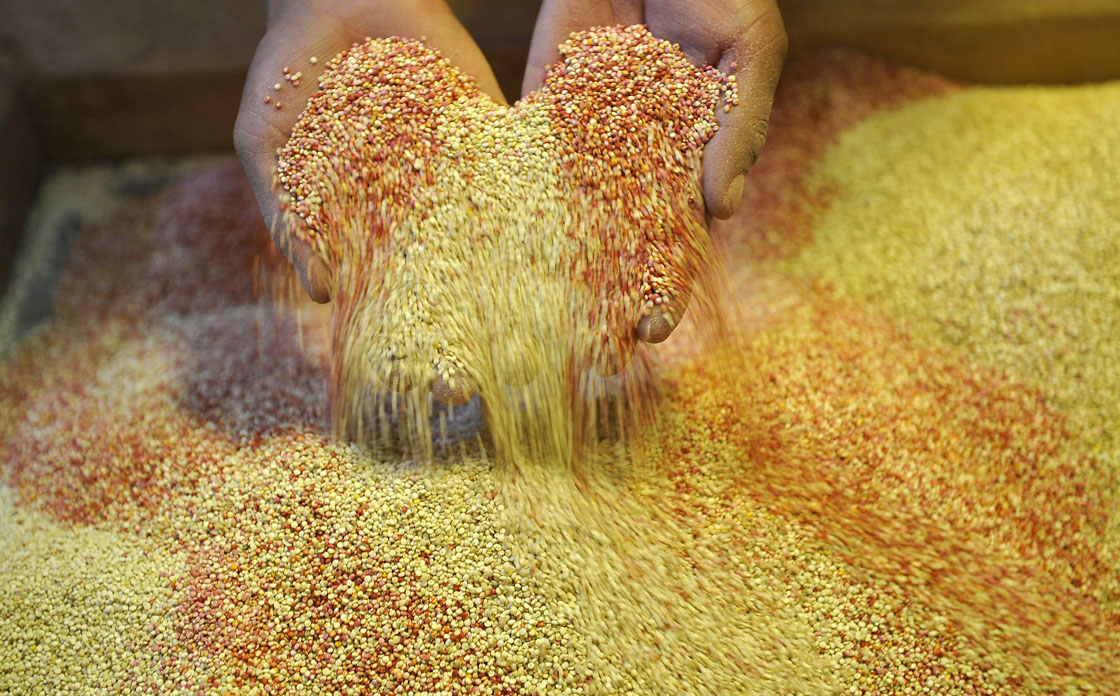TORONTO – You may have abandoned your quinoa purchase while grocery shopping this weekend after newspapers warned that North American consumers’ love for the seed is making the Latin American food staple too expensive to buy in Peru and Bolivia, where it’s typically grown.

Quinoa has been named Food of the Year by the United Nations for its powerful punch of nutrients, so it’s no wonder the seed is gaining popularity. But is this fad keeping the food out of reach in certain countries growing the product?
Guilt-inducing headlines popped up globally, such as “The more you love quinoa, the more you hurt Peruvians and Bolivians” and “Can vegans stomach the truth about quinoa?” But not everyone agrees.
Global News takes a look at the allegations, the counter-arguments and the bottom line from a Canadian economist.
The allegations: Newspapers have chronicled quinoa’s rise to popularity along with its economic value. Once a relatively unknown Peruvian grain eaten by locals, the food packed with protein has now been embraced by vegans and health-conscious eaters in the Western world. As a result, the price has soared – the Guardian in the UK suggests it has tripled in cost since 2006 – so much so that it’s now too expensive for some Latin American countries growing the seed. The New York Times suggests consumption of quinoa in Bolivia fell 34 per cent.

Get weekly health news
Sound bite: “The appetite of countries such as ours for this grain has pushed up prices to such an extent that poorer people in Peru and Bolivia, for whom it was once a nourishing staple food, can no longer afford to eat it,” the Guardian’s Joanna Blythman writes. She suggests that in Lima, quinoa costs more than chicken and even imported junk food is cheaper.
The counter-argument: Canadian writers responded to these reports with a promise to consumers that they should continue buying quinoa.
Sound bite: “The rise of quinoa is a great opportunity for Bolivian and Peruvian farmers…they have succeeded beyond anyone’s wildest dreams to find hungry export markets,” the Ottawa Citizen’s editorial writer says. The Food and Agriculture Organization of the UN even notes that the Year of the Quinoa was proposed by the government of Bolivia.
Meanwhile, other outlets cited the Andean Information Network: “Quinoa fetches a guaranteed high price affording farmers economic stability.”
The expert’s opinion:Ian Lee, an economics professor at Carleton University’s Sprott School of Business, says that readers shouldn’t be alarmed by these reports. He’s taught in the developing world, including Chile, Mexico and Argentina.
“This is the best thing that ever happened to them,” he said, noting that farmers are likely relishing the quinoa craze.
He says that the media reports paint a picture of poor families unable to buy quinoa now that prices have gone up, but that isn’t the case.
“Quinoa is only one item on the food budget, and it’s a very small item, so the idea that they are literally unable to afford it just strikes me as nonsense as someone who plays with budgets all the time,” he said.
“I’m very, very skeptical.”
He said that consumers will notice that the price of bread, or milk, eggs or meat have gone up so they’ll replace some staples with other items as prices fluctuate.
Meanwhile, he says that the Western world can’t assume that quinoa has lost its lustre in Peru and Bolivia solely because of price. In China for example (where Lee has taught), kids are trading in their ancestors’ traditional food staples for fast food.
“We don’t know their motivation,” he said.
The bottom line: “If people want to buy it, and they think it’s good for them, they should continue to buy it and tell themselves that a certain part of the price increase is going to flow back to the farmers of Peru and Bolivia,” he said.
“They’re going to be better off. What will hurt those people is when Western consumers decide this fad has come to an end and they’ll stop buying it in large numbers and the price will drop precipitously and they’ll go back to experiencing much lower incomes.
carmen.chai(at)globalnews.ca
– With files from Irene Ogrodnik, Global News







Comments